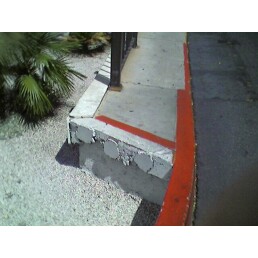My laptop battery started dying just as I noticed the huge bats somewhere around Barstow.
Actually, I only vaguely recall last week's American Planning Association's 100th National Planning Conference in Las Vegas. My hazy recollection was not caused by losing money gambling on basketball playoffs and blackjack, only to discover when I submitted my expense receipts this wasn't reimbursable. It wasn't caused by free-flowing and inexpensive booze permitted even on public sidewalks — this I didn't even notice. And it wasn't because I stayed up until the wee hours inside cocoon-like casinos that operate without regard for time of day or my need for beauty sleep. It was because I was managing projects, presenting Powerpoints and merging companies, I swear.
The first day was ambitious, combining the prospect of professional advancement with a rekindled youthful exuberance. I attended "Modal Choice in Transportation Decision Making" where a couple of guys from Parson Brinkerhoff and Carter & Burgess presented a methodology in which they normalize as much transportation data as they can find for an area, then apply the measured impact of public transportation improvements in other cities. Combining the two, they estimated the impacts on mode splits, travel times and other factors in their hypothetical study area. It was a fun little application that produced a transportation efficiency score, but this TDM methodology seemed to combine coarsely the typological nuances of travel patterns from distinctly different areas. It reminded me of a Los Angeles Mayor Antonio Villaraigosa speech when he said Parson Brinkerhoff designed many of the light rail lines in Los Angeles and used different technology in each one, costing the city billions to integrate.
Later I attended "Regional Design in the Puget Sound Region," which discussed the challenges and progress of Puget Sound Regional Council's planning efforts. The new 2040 Vision regional strategy looks to accommodate population growth within the contours of existing travel sheds while preventing development in sensitive environments. There was a lot of talk about promulgating regional perceptions through the unique natural characteristics of the region, to which one speaker commented, "What are people supposed to identify with, Mount Can Never See?"
The day concluded with Gunnison-style transfer of development rights, in which the development of rural tracts into subdivisions in Gunnison County, Colorado, could be taxed 10% of the assessed value to preserve other rural areas. I thought this was a great yet completely obvious idea. This program however, is being proposed as voluntary for developers, who receive reduced open space requirements in exchange for their participation.
The next day I woke up to my 9:30 wakeup call with less vigor and tenacity than the day before. Indeed, Vegas was starting to take its toll and I figured I should punish myself for coming to this city of sin by attending a presentation about zoning. "How Sick is Your Zoning Ordinance?" was presented by a couple lawyers from the Midwest. I learned that if your city is getting sued a lot and there are many requests for variances, the zoning may be sick, or just old and useless. There is a lot of useful information for looking at updating zoning ordinances at http://www.camiros.com/my_ordinance_is_sick.
Tuesday blended into Wednesday with me needing to resuscitate a project in the afternoon, a company toast celebrating the merger of Solimar with DC&E, the APA reception party that night (planners generally aren't the best dancers — they think too far ahead), the rest of that night, and then the morning. I managed to make it back to my hotel despite almost walking off a sidewalk that ended without notice at the conference hotel.

Wednesday was split between producing project deliverables in 40 minutes on a laptop with a broken battery charger and a relaxing session about "New Zoning Techniques Using GIS." The highlight of this session was a planner from Las Vegas presenting 3-D visualizations of proposed projects in the city. He said the visualizations typically take two days to two weeks to design, and the method can be self-taught. All you have to do is get the GIS 3-D analyst extension, Site Builder software for fly-throughs, Sketch Up for custom buildings, Photoshop for the facades and Adobe Premier to make movie files. Combine the five programs together in some intuitive way and you can have amazing presentations too. No one had any questions.
Throughout the conference, planners were skeptical of this behemoth city in the desert. Some warmed up to the city and the services it provides, but most remained astray. An article in the local newspaper describes this tension.
http://www.lasvegassun.com/news/2008/may/03/planning-official-arms-over-putdowns-las-vegas/
- Aaron Engstrom